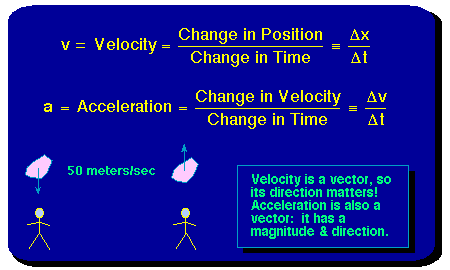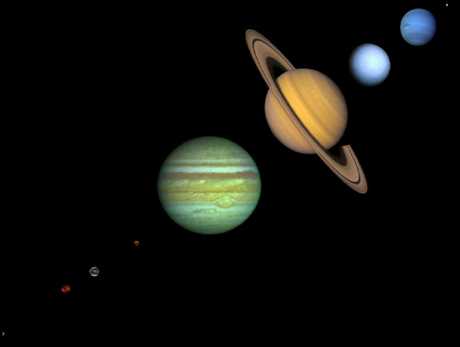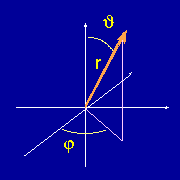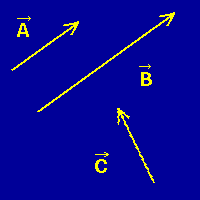
 Vectors: Velocities,
Vectors: Velocities,In order to understand the discoveries of Newton, we must have an understanding of three basic quantities: (1) velocity, (2) acceleration, and (3) force. In this section we define the first two, and in the next we shall introduce forces. These three quantities have a common feature: they are what mathematicians call vectors.
 However, consider a velocity. If we say that a car is going 70 km/hour, we
have not completely specified its motion, because we have not specified the
direction that it is going. Thus, velocity is an example of a vector
quantity. A vector generally requires more than one number to specify it; in
this example we could give the magnitude of the velocity (70km/hour), a
compass heading to specify the direction (say 30 degrees from North), and
an number giving the vertical angle with respect to the Earth's surface
(zero degrees except in chase scenes from action movies!).
The adjacent figure
shows a typical coordinate system for specifying a vector in terms of
a length r and two
angles, theta and phi.
However, consider a velocity. If we say that a car is going 70 km/hour, we
have not completely specified its motion, because we have not specified the
direction that it is going. Thus, velocity is an example of a vector
quantity. A vector generally requires more than one number to specify it; in
this example we could give the magnitude of the velocity (70km/hour), a
compass heading to specify the direction (say 30 degrees from North), and
an number giving the vertical angle with respect to the Earth's surface
(zero degrees except in chase scenes from action movies!).
The adjacent figure
shows a typical coordinate system for specifying a vector in terms of
a length r and two
angles, theta and phi.
 Vectors are often distinguished from
scalar quantities either by placing a small arrow over the quantity, or by
writing the quantitity in a bold font. It is also common to indicate a vector
by drawing an arrow whose length is proportional to the magnitude of the
vector, and whose direction specifies the orientation of the vector.
Vectors are often distinguished from
scalar quantities either by placing a small arrow over the quantity, or by
writing the quantitity in a bold font. It is also common to indicate a vector
by drawing an arrow whose length is proportional to the magnitude of the
vector, and whose direction specifies the orientation of the vector.
In the adjacent image we show graphical representations for
three vectors. Vectors A and C have the same
magnitude but different directions. Vector B has the same orientation as
vector A, but has a magnitude that is twice as large. Each of these represents
a different vector, because for two vectors to be equivalent they must have
both the same magnitudes and the same orientations.

 Notice that velocity, which is a vector, is changed if either its magnitude or
its direction is changed. Thus, acceleration
occurs when either the magnitude or direction of the velocity (or
both) are altered.
Notice that velocity, which is a vector, is changed if either its magnitude or
its direction is changed. Thus, acceleration
occurs when either the magnitude or direction of the velocity (or
both) are altered.
In particular, notice from the adjacent image
that circular motion (even at uniform
angular velocity) implies a
continual acceleration, because the direction of the velocity
(indicated by the direction of the arrow) is
continuously changing, even if its magnitude (indicated by the length of the
arrow) is constant. This point, that
motion on a curved path is accelerated motion, will
prove crucial to our subsequent understanding of motion in gravitational
fields.